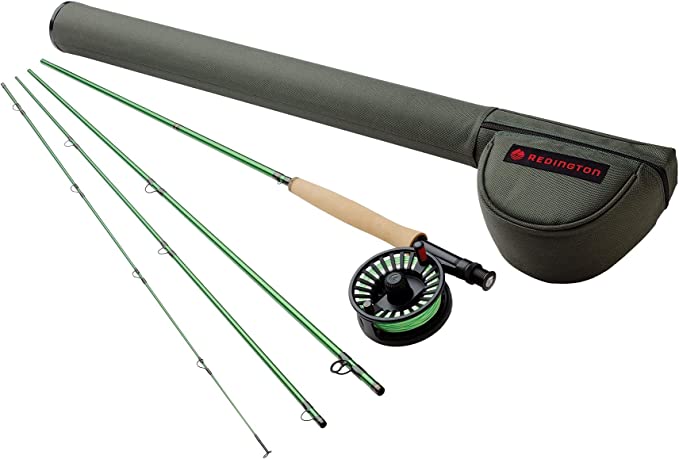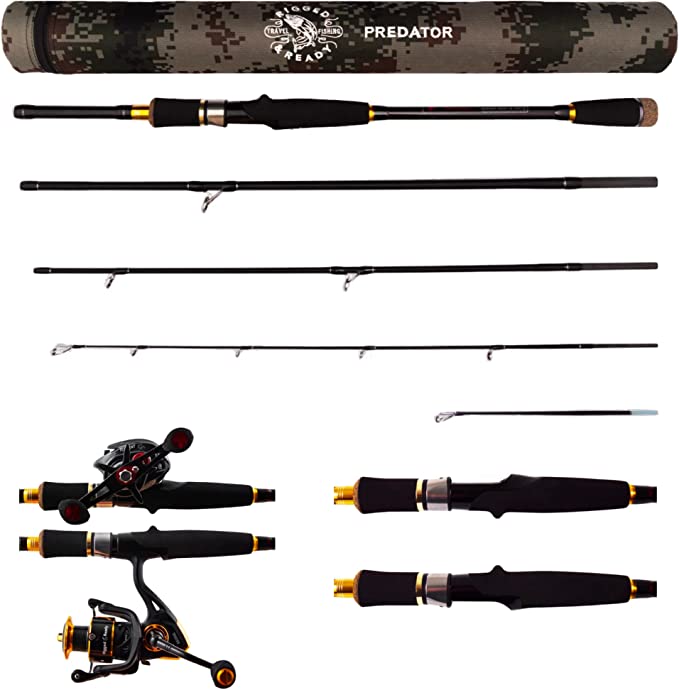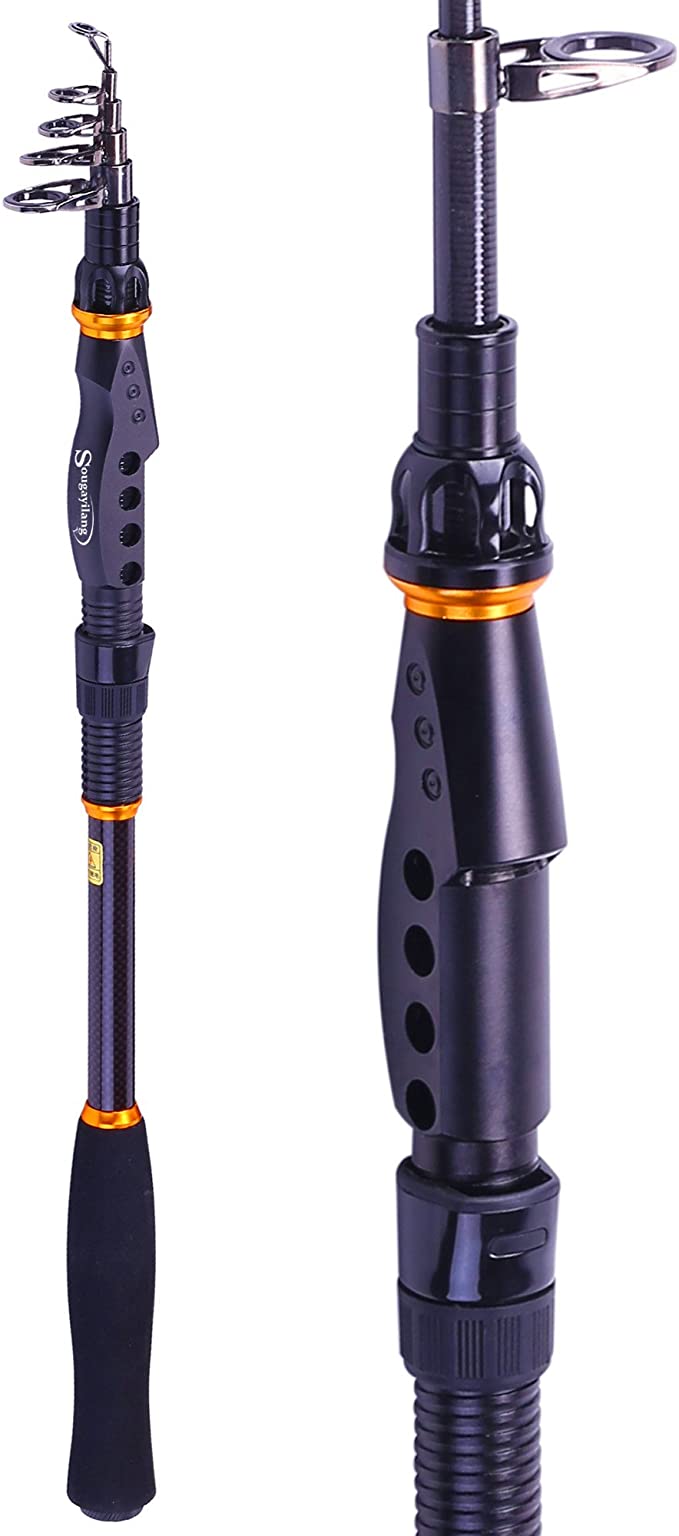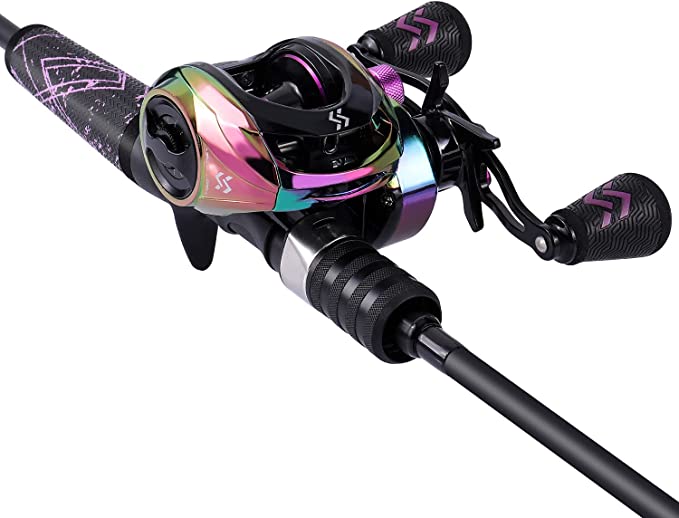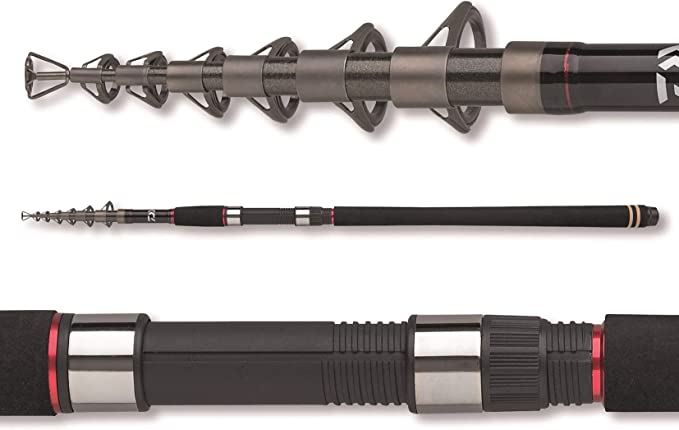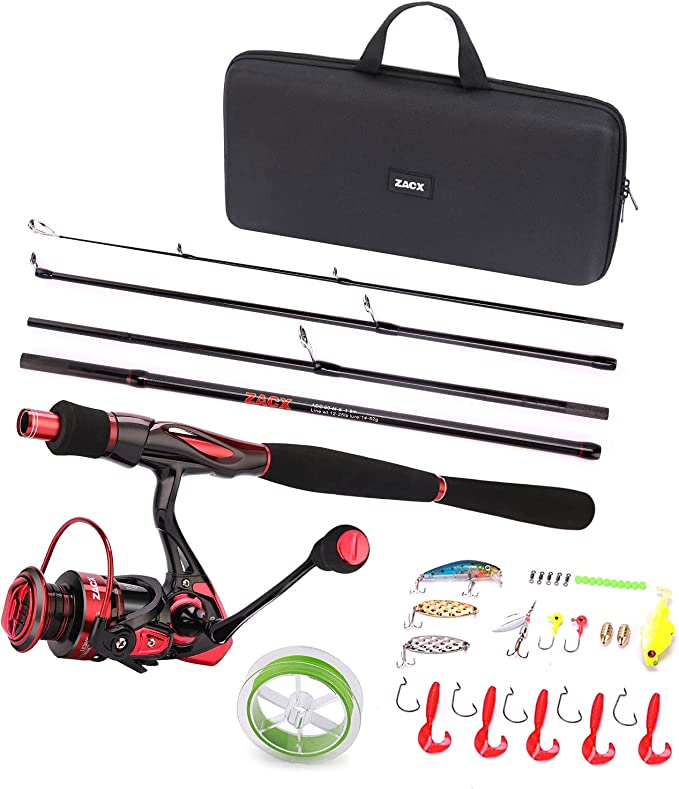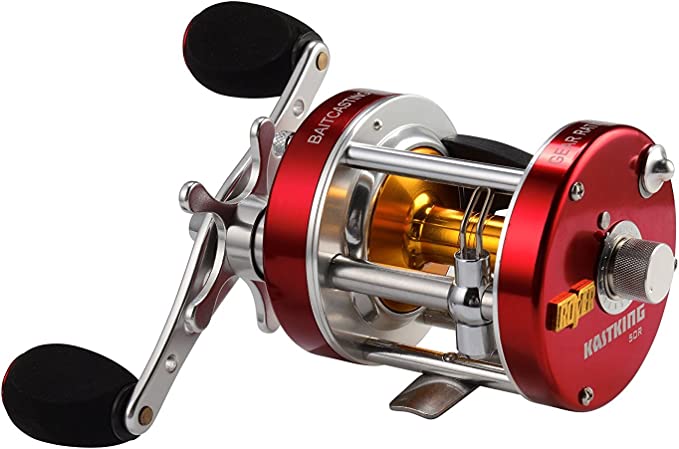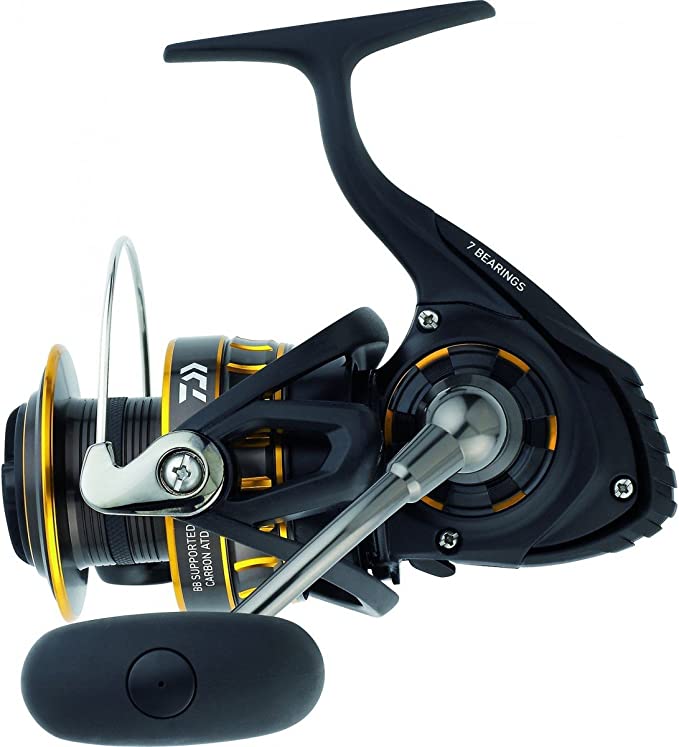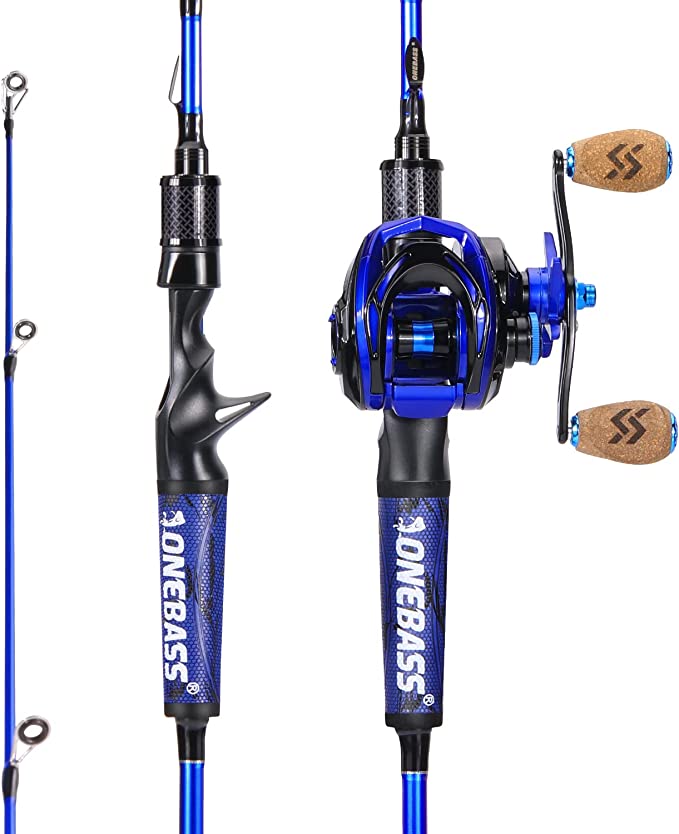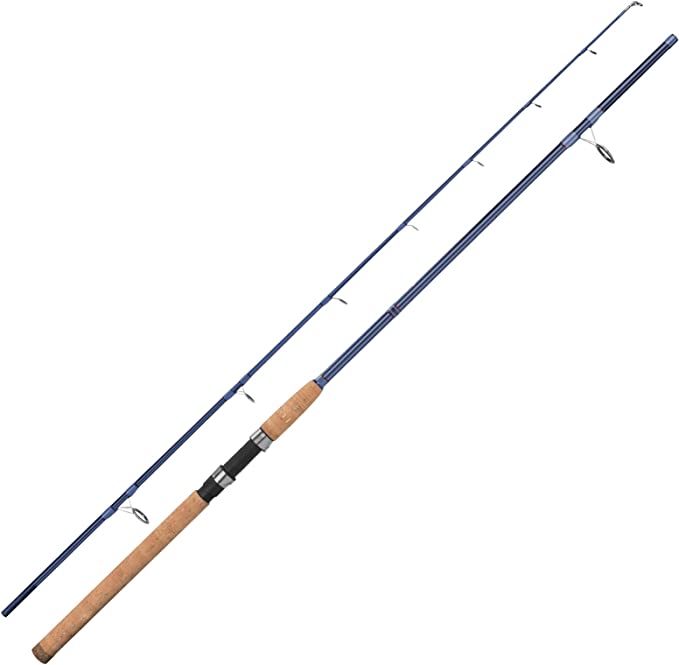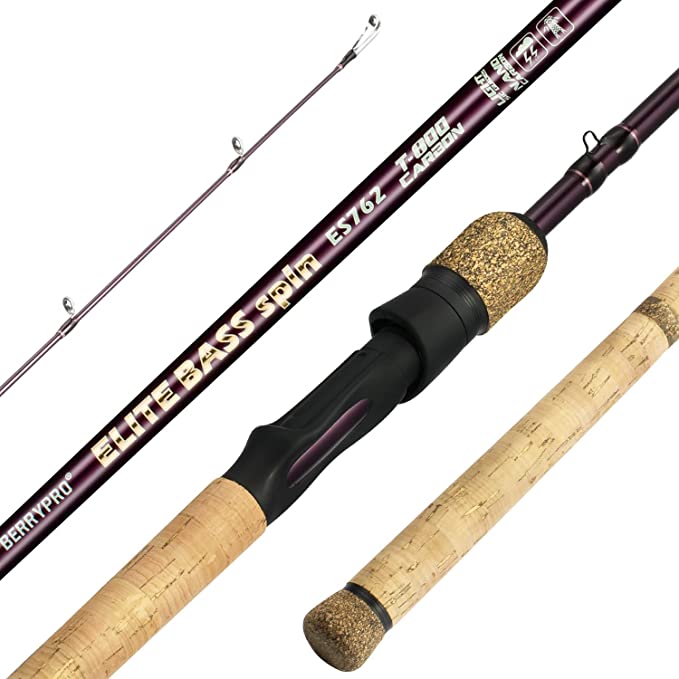One Bass LYTZ-Blue-1.8MQB Fishing Rod Reel Combo: Sensitivity and Strength for Every Angler
Update on Feb. 12, 2025, 5:19 p.m.
The Angler’s Quest for the Perfect Cast
Imagine you’re standing on the shore of a pristine lake, the early morning mist rising from the water’s surface. You cast your line, the lure arcing gracefully through the air before landing with a gentle splash. This seemingly simple act is the culmination of centuries of technological advancement, a blend of physics, materials science, and engineering, all working in harmony to deliver that perfect cast. But what exactly happens behind the scenes? Let’s explore the fascinating science behind the modern fishing rod and reel combo.

The Backbone of Performance: Understanding Carbon Fiber
The fishing rod, far from being a simple stick, is a sophisticated tool designed to transmit even the faintest nibble from the lure to your hand, while simultaneously providing the strength to battle a powerful fish. The key to this delicate balance lies in the material: carbon fiber.
- What is Carbon Fiber?
Carbon fiber, also known as graphite fiber, is a polymer composed of long, thin strands of carbon atoms bonded together in a crystalline structure. These strands are incredibly strong and stiff for their weight, making them ideal for applications where strength and lightness are paramount, such as aerospace, high-performance vehicles, and, of course, fishing rods. The individual fibers are thinner than a human hair, yet possess incredible tensile strength – the ability to resist being pulled apart.
 * The Meaning of “30-Ton”
* The Meaning of “30-Ton”
When you see a rod described as “30-ton carbon fiber,” the “ton” refers to the modulus of elasticity, also known as Young’s Modulus. This is a measure of a material’s stiffness – its resistance to deformation under stress. A higher modulus means a stiffer material. A 30-ton carbon fiber rod strikes a balance, providing excellent sensitivity to detect light bites, while retaining the power needed to set the hook and fight a fish. Think of it like this: a lower-ton carbon fiber rod would be more flexible (like a willow branch), while a higher-ton rod would be stiffer (like a steel rod). 30-ton hits that sweet spot for many fishing applications.
- Multidirectional Fiber Alignment: Strength from Every Angle
The One Bass LYTZ-Blue-1.8MQB rod utilizes a technique called “Fortified Multidirectional Fiber Alignment.” Instead of simply aligning all the carbon fibers in one direction, they are layered at various angles. This creates a matrix that is strong in all directions, resisting twisting and bending forces that can occur during casting and fighting a fish. This multidirectional strength is crucial for preventing rod breakage and ensuring consistent performance.
Smoothness Redefined: Guides and Bearings
While the rod blank provides the backbone, the guides and bearings play a crucial role in the overall performance of the combo, particularly in terms of casting distance and retrieve smoothness.
- The Role of Guides: Minimizing Friction, Maximizing Distance
The guides, those small rings along the length of the rod, serve a critical purpose: they guide the fishing line from the reel to the lure. The material and design of these guides significantly impact casting distance and line wear. The LYTZ-Blue-1.8MQB features stainless steel guides. Stainless steel offers a smooth surface that minimizes friction as the line passes through. Less friction translates to longer casts and reduces the risk of line damage, especially with abrasive braided lines. The arrangement of the guides is also carefully calculated to distribute stress evenly along the rod blank and optimize line flow.
- Bearings: The Heart of Smooth Operation
Inside the reel, bearings are the unsung heroes of smooth operation. These small, precision-engineered components reduce friction between moving parts, allowing the reel to turn effortlessly. The CL-L Spirit Flame reel boasts a 9+1 bearing system. This means it has nine ball bearings supporting various rotating components, plus one roller bearing, often referred to as an anti-reverse bearing. This bearing prevents the handle from turning backward, providing instant hooksets. More bearings generally equate to a smoother, more refined feel, but the quality of the bearings is equally important.
The Power of Choice: Gear Ratios Explained
The gear ratio of a fishing reel is a fundamental specification that dictates how quickly you can retrieve line. It’s a crucial factor to consider, depending on your fishing style and the type of lures you’re using.
- What is Gear Ratio?
Gear ratio refers to the number of times the reel’s spool rotates for every one complete turn of the handle. For example, the CL-L Spirit Flame reel has an 8.0:1 gear ratio. This means that for every single rotation of the handle, the spool turns 8.0 times.
- High Speed vs. Low Speed: Choosing the Right Tool
A high gear ratio like 8.0:1 is considered fast. It allows you to quickly retrieve line, which is advantageous when using lures that require a fast presentation, such as crankbaits, spinnerbaits, or topwater lures. It also helps you quickly take up slack line after a strike, increasing your chances of a successful hookset. Lower gear ratios (e.g., 5.0:1) are better suited for techniques that require a slower, more deliberate retrieve, such as fishing with large swimbaits or working a jig slowly along the bottom.
Taming the Beast: Mastering the Magnetic Braking System
Casting a baitcasting reel can be a challenge, especially for beginners. The dreaded “bird’s nest,” a tangled mess of line, is a common frustration. This is where the braking system comes into play.
- The Physics of Magnetic Braking
The CL-L Spirit Flame reel utilizes a magnetic braking system. This system employs magnets to create resistance against the spinning spool during the cast. As the spool rotates, it generates an electrical current within the magnetic field. This current, in turn, creates an opposing magnetic field that acts as a brake, slowing the spool down. The closer the magnets are to the spool, the stronger the braking force.
- Adjusting Your Brakes for Optimal Performance.
The beauty of a magnetic braking system is its adjustability. A dial on the side of the reel allows you to control the distance between the magnets and the spool, fine-tuning the braking force. For beginners, starting with a higher braking setting is recommended. As you become more proficient, you can gradually reduce the braking force to achieve longer casts. The key is to find the sweet spot where the spool spins freely enough for distance, but not so freely that it overruns and creates a backlash.

Beyond the Basics: Rod Length, Action, and Power
There are several other characteristics of fishing rods that are good to know.
* Rod Length:Rod length is the measurement of the rod blank from butt to tip, the LYTZ-Blue comes in several variations, 6‘0”, 6‘6”, and 7‘0”. Shorter rods offers better accuracy, and ease of transport, while longer rods will typically allow for further casts.
* Rod Power:Rod power rating refers to the rod blank’s resistance to bending, and ranges from Ultra-Light to Extra-Heavy. The LYTZ-Blue comes in Medium-Fast and Medium Heavy-Fast.
* Rod Action:Rod Action refers to how much of the rod flexes when pressure is applied to the tip, the rating will range from Slow to Extra Fast.
Conclusion: The Evolution of Angling Technology
From simple bamboo poles to the sophisticated carbon fiber rods and precision-engineered reels of today, fishing technology has come a long way. The One Bass LYTZ-Blue-1.8MQB with CL-L Spirit Flame Fishing Rod Reel Combo represents a significant step forward, offering a blend of sensitivity, strength, and control that was once unimaginable. By understanding the science behind these advancements, anglers can not only improve their fishing success but also gain a deeper appreciation for the intricate interplay of physics, materials science, and engineering that makes it all possible. The pursuit of the perfect cast continues, driven by innovation and a passion for the sport.

